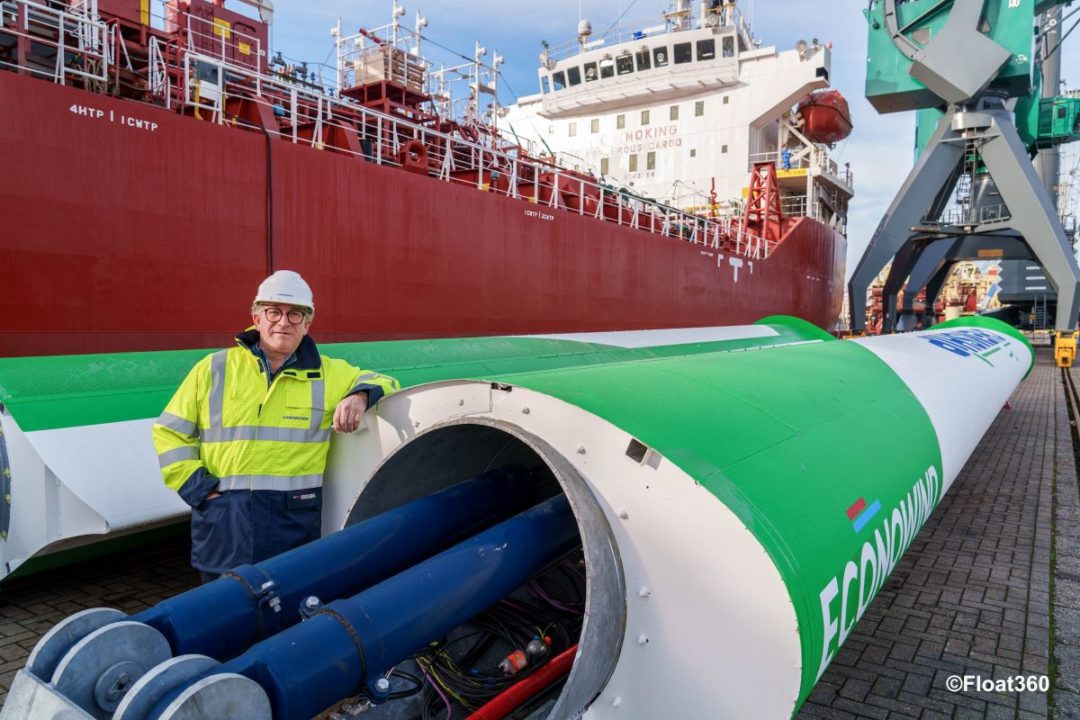
Visit Our Sponsors |
|
|
|
|
|
|
|
|
|
|
|
|
|
|
|
|
|
|
|
|
|
|
|
|
|
|
|
|
|
|
|
|
|
|
|
|
|
|

Chemship's CEO Niels Grotz. Photo: Chemship
Chemship, the Rotterdam-based operator of chemical tankers, has commissioned its first ship with wind-assisted propulsion, claiming the MT Chemical Challenger is the first chemical tanker in the world to be equipped with sustainable wind technology. The ship will serve on Chemship’s Transatlantic route between the East Coast of the United States and the Mediterranean.
Chemship announced February 19 that four 16-metre-high aluminium wind sails were installed on board the 134-metre-long vessel. The VentoFoils from Econowind create a direct wind surface of 180 square metres. Smart vacuum technology quintuples the force of the wind, creating a gross wind surface of 900 square metres, giving the equivalent power of a sail measuring 30 by 30 metres. Chemship expects to achieve an average CO2 reduction of 10% with these turbo sails.
With wind-assisted ship propulsion, CEO Niels Grotz says he sees shipping returning to its roots. “Despite the fact that shipping already has the lowest carbon footprint of all transport modes, we can use wind to make our existing fleet even more sustainable,” said Grotz. He added that using the VentoFoils will mean an anticipated annual reduction of 850 tonnes of CO2, or the equivalent to the yearly CO2 emissions of more than 500 passenger cars.
The emergence of wind-assisted sailing coincides with the introduction of the European Emissions Trading System for the shipping industry, a “cap and trade” system to reduce emissions via a carbon market, introduced January 1, 2024.
“Our customers increasingly demand CO2 reports. The better our ships perform, the higher the rating from our customers,” said Grotz. “Fewer emissions are not only beneficial for the environment, you will also notice it directly in your wallet.”
Chemship operations director Michiel Marelis said the vessel operator was looking for a solution that would not interfere with normal operations. “These wind sails were easy to install without adding reinforcements to the ship. They are lightweight, have a small deck ‘footprint’ and do not obstruct the crew’s line of sight,” Marelis explained. “At the push of a button, they can fold or set the sails as needed. Above wind force seven, the sails fold automatically, which is much safer. With positive results, we will also equip the next vessel with VentoFoils. We hope this will inspire others to choose wind assisted propulsion too.”
Marelis said the company is also using improved lubricating oils and a coating that enables the stainless steel ship to glide through the water more efficiently, with a cumulative effect of fuel savings of more than 15%.
RELATED CONTENT
RELATED VIDEOS
Timely, incisive articles delivered directly to your inbox.






